Ford, a name synonymous with American automotive history, isn’t just about mass production and revolutionizing the assembly line. The Blue Oval also boasts a rich heritage deeply intertwined with motorsports and high-performance vehicles. From NASCAR ovals to the grueling tracks of Le Mans, Ford’s competitive spirit has consistently pushed the boundaries of speed and engineering. This legacy of performance naturally trickles down to their road cars, offering enthusiasts a taste of that racing pedigree. For those with a need for speed, Ford has delivered some truly breathtaking machines throughout its history. Let’s delve into the top 10 Fastest Ford Cars ever manufactured, a testament to the brand’s enduring pursuit of velocity.
We’ve compiled this list using data from reputable sources including the Shelby American Collection, Automobile-Catalog, and Supercars.net, ensuring accuracy and reliability.
[ 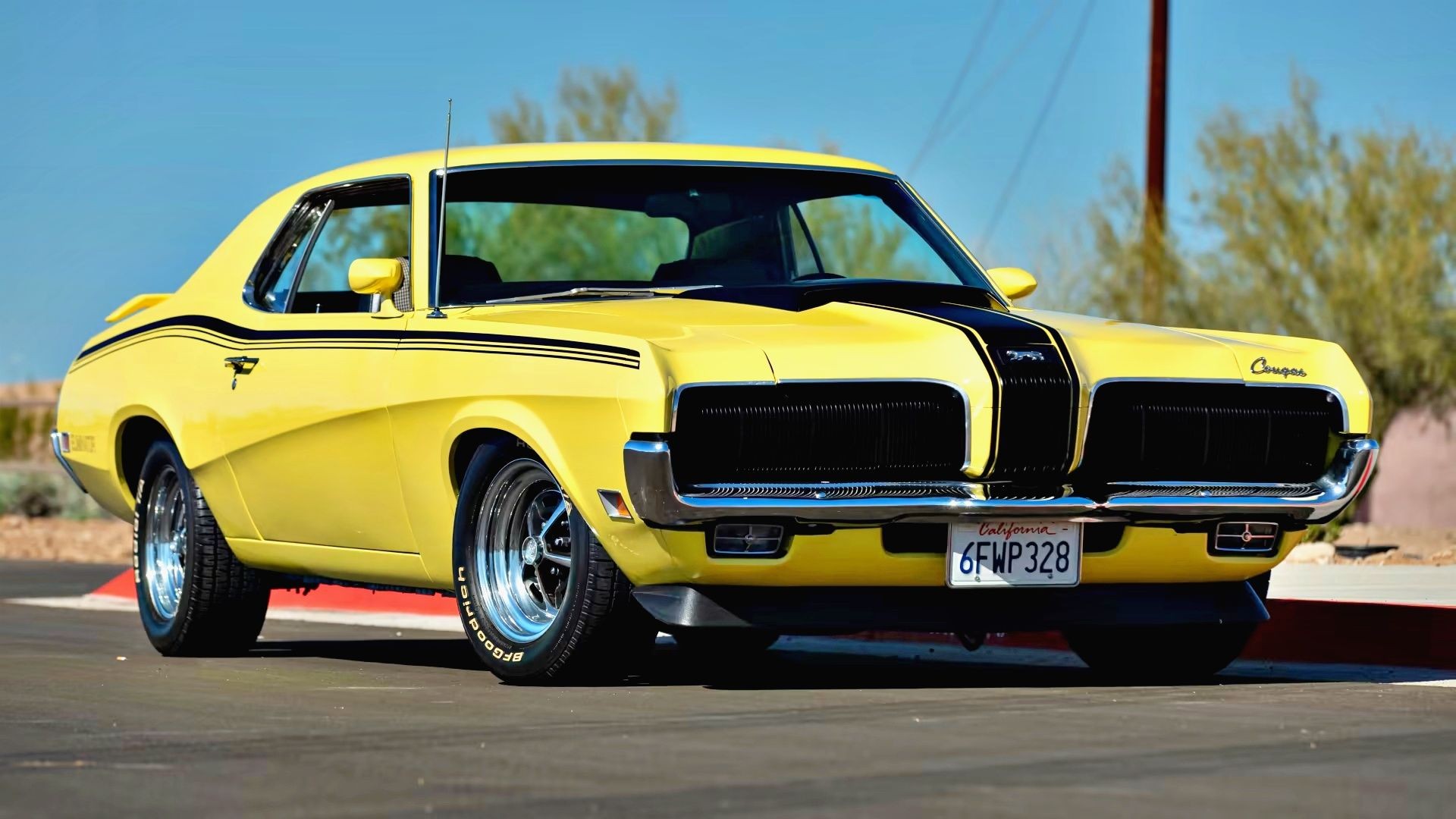 Yellow Mercury Cougar Eliminator
Yellow Mercury Cougar Eliminator
](/fastest-classic-ford-mercury-muscle-cars/)
10. 1987 Ford Sierra RS500 Cosworth
Top Speed: 150 MPH
The Ford Sierra RS500 Cosworth wasn’t just another Sierra; it was a homologation special, meticulously crafted to meet the stringent regulations of Group A racing. Following the demise of the wild Group B rally class, Group A emerged, emphasizing tighter controls on modifications and power output for both circuit racing and rallying. While its Group B counterpart, the RS200, is famous for rally prowess, the RS500 carved its legend on the racetrack, dominating touring car championships.
Specifications
| Engine | Turbocharged and intercooled 2.0-liter, DOHC 16-valve, inline-four |
|---|---|
| Power | 201 horsepower @ 6,000 rpm |
| Torque | 204-pound feet @ 4,500 rpm |
| Drivetrain | 5-speed manual; rear-wheel drive |
| Zero to 60 | 5.4 seconds |
| Quarter mile | 14.2 seconds @ 98 MPH |
| Top speed | 150 MPH |
The heart of the RS500 is the YB engine, a Cosworth marvel featuring a sixteen-valve cylinder head and turbocharging, significantly boosting the Sierra’s performance. Demonstrating its racing DNA, later RS500 models came equipped with a secondary set of injectors, initially unplugged. When activated, these injectors allowed for increased boost pressure, unlocking substantially more power for racing applications, pushing racing versions to nearly 500 horsepower and speeds exceeding 150 MPH on the track. This made the RS500 a formidable force in touring car racing, cementing its place as one of the fastest Fords of its era.
9. 1971 Ford Transit Supervan 1
Top Speed: 150 MPH
In an era where high-performance SUVs raise eyebrows, the original Ford Transit Supervan was truly groundbreaking, albeit not for commercial sale. Ford never intended to sell Supervans to the public; instead, it was a brilliant publicity stunt. The concept of a 400-horsepower van, however outlandish, generated significant buzz around the Ford brand, successfully drawing attention and foot traffic to dealerships. It was a masterclass in automotive marketing, proving that sometimes, the most unconventional ideas are the most effective.
Specifications
| Engine | 5.0-liter, pushrod OHV 16-valve, naturally aspirated V-8 |
|---|---|
| Power | 435 horsepower |
| Torque | Not available |
| Drivetrain | 4-speed manual; rear-wheel drive |
| Zero to 60 | 7.0 seconds |
| Quarter mile | 14.5 seconds |
| Top speed | 150 MPH |
The Supervan was an incredibly elaborate project for a publicity vehicle. It began with a retired Ford GT40 chassis, the legendary Le Mans race car. A potent 5.0-liter V-8 engine was centrally mounted, replacing the usual cargo area, and many other components were directly borrowed from the GT40. While not primarily designed for drag racing, the Supervan could still achieve a 14.5-second quarter-mile and reach speeds beyond 150 MPH – a terrifying prospect in a vehicle shaped like a brick. Its purpose was spectacle, and in that, the Supervan was an unqualified success, showcasing Ford’s engineering prowess in a wildly unexpected package.
[ 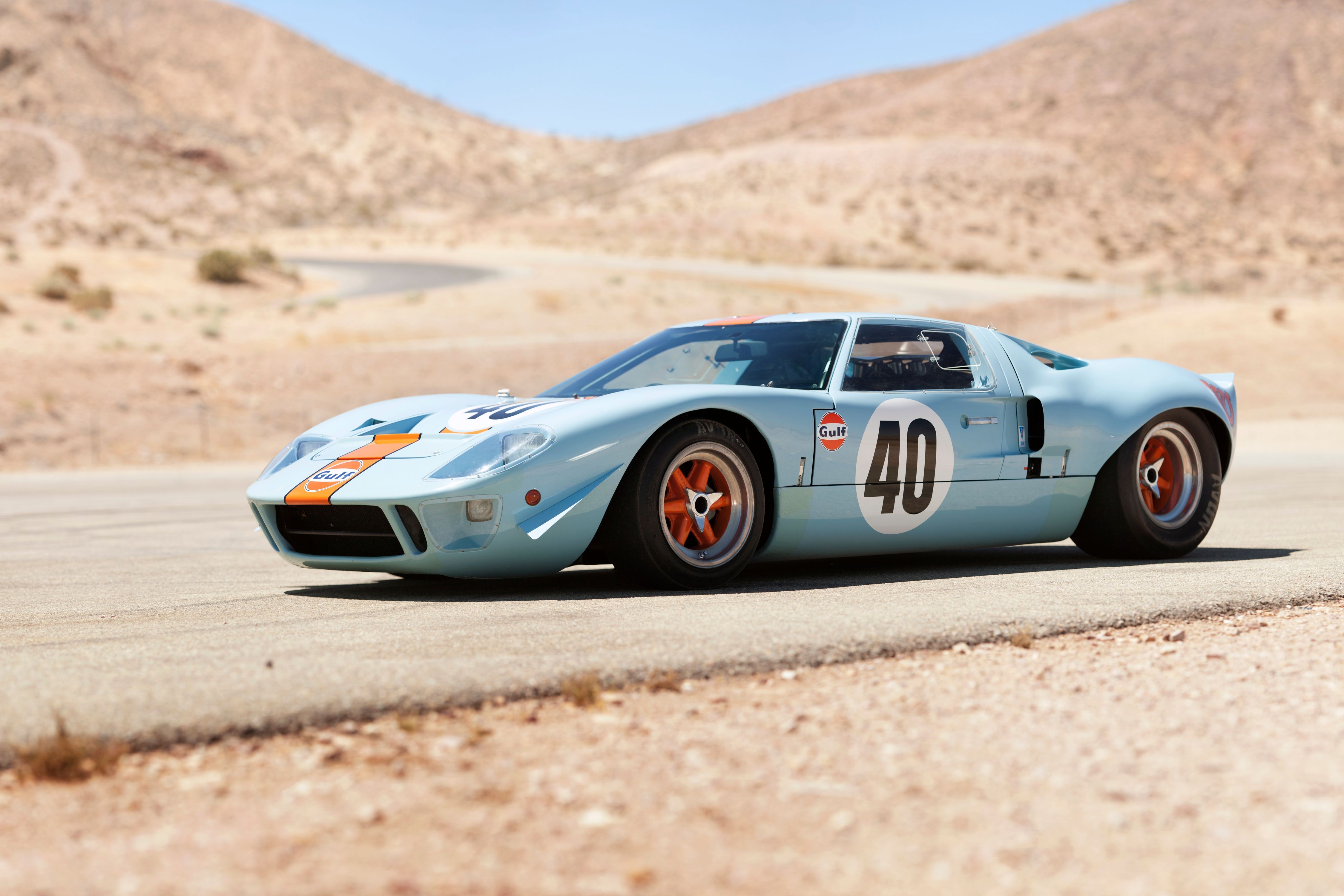 1966 Ford GT40 Mark II parked
1966 Ford GT40 Mark II parked
](/10-fun-facts-about-the-ford-gt40-that-you-didnt-know/)
8. 1987 Ford RS200 Evolution
Top Speed: 150 MPH
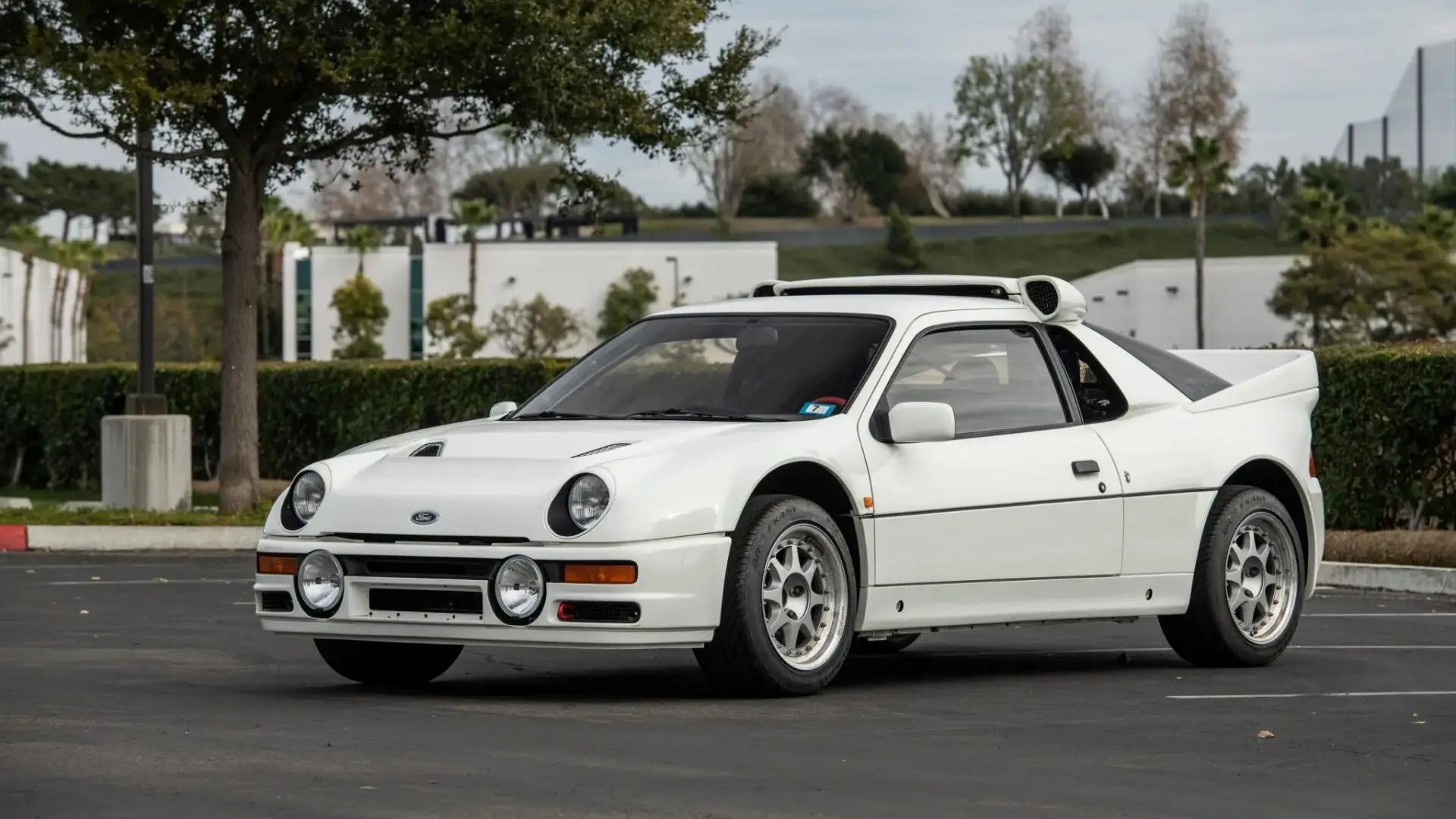 White Ford RS200 Evolution
White Ford RS200 Evolution
While the Ford Escort, in its Mk1 and Mk2 forms, often steals the limelight as Ford’s quintessential rally car, the RS200 holds a unique and arguably more extreme position. With its short wheelbase, advanced four-wheel-drive system, and near-500 horsepower potential in race trim, the RS200 stands as the ultimate Ford rally weapon. It was purpose-built to conquer the fiercely competitive and notoriously dangerous Group B rallying era, a time of unbridled power and minimal restrictions.
Specifications
| Engine | Turbocharged and intercooled 1.8-liter, DOHC 16-valve, inline-four |
|---|---|
| Power | 247 horsepower @ 6,500 rpm |
| Torque | 215-pound feet @ 4,500 rpm |
| Drivetrain | 5-speed manual; four-wheel drive |
| Zero to 60 | 4.7 seconds |
| Quarter mile | 13.8 seconds |
| Top speed | 150 MPH |
Homologation rules for Group B demanded that Ford produce and sell 200 road-legal versions of this rally rocket. This makes the RS200 not only incredibly fast but also exceptionally rare and collectible. In road-going specification, with a fully trimmed interior, the RS200 produced significantly less power than its rally counterpart. However, it still delivered blistering performance figures, achieving 0-60 mph in just 4.7 seconds and reaching a top speed of 150 MPH. This begs the question: just how much faster could a fully unleashed RS200 Evolution truly be? Its rarity and raw performance make it a coveted piece of Ford’s high-speed history.
7. 2000 Ford Mustang SVT Cobra R
Top Speed: 175 MPH
 Red Ford Mustang SVT Cobra R
Red Ford Mustang SVT Cobra R
While the “Cobra R” badge had appeared before, the 2000 SVT Cobra R marked a pivotal moment for the Mustang. It was the first Mustang designed with an unwavering focus on outright performance and speed, sacrificing everyday usability for track dominance. Visually, it stood apart from regular Mustangs with a functional aero package, wider wheels, and track-ready tires. However, its performance enhancements went far beyond mere aesthetics.
Specifications
| Engine | 5.4-liter, DOHC 32-valve, naturally aspirated V-8 |
|---|---|
| Power | 385 horsepower @ 6,250 rpm |
| Torque | 385 pound-feet @ 4,250 rpm |
| Drivetrain | 6-speed manual; rear-wheel drive |
| Zero to 60 | 4.4 seconds |
| Quarter mile | 12.8 seconds @ 110 MPH |
| Top speed | 175 MPH |
The Cobra R’s engine began as a standard 4.6-liter V-8 but was heavily modified by Ford’s Special Vehicle Team (SVT). The result was a 5.4-liter powerhouse producing 385 horsepower. SVT didn’t stop at the engine; they meticulously reworked the Cobra R’s suspension, incorporating Bilstein shocks, stiffer springs, thicker sway bars, lighter control arms, and high-performance Brembo brakes for exceptional stopping power. These comprehensive upgrades translated into a 175-MPH top speed and remarkable handling capabilities. Whether on a straight line or carving through corners, the Mustang SVT Cobra R was, and remains, a genuinely fast and focused Ford.
[ 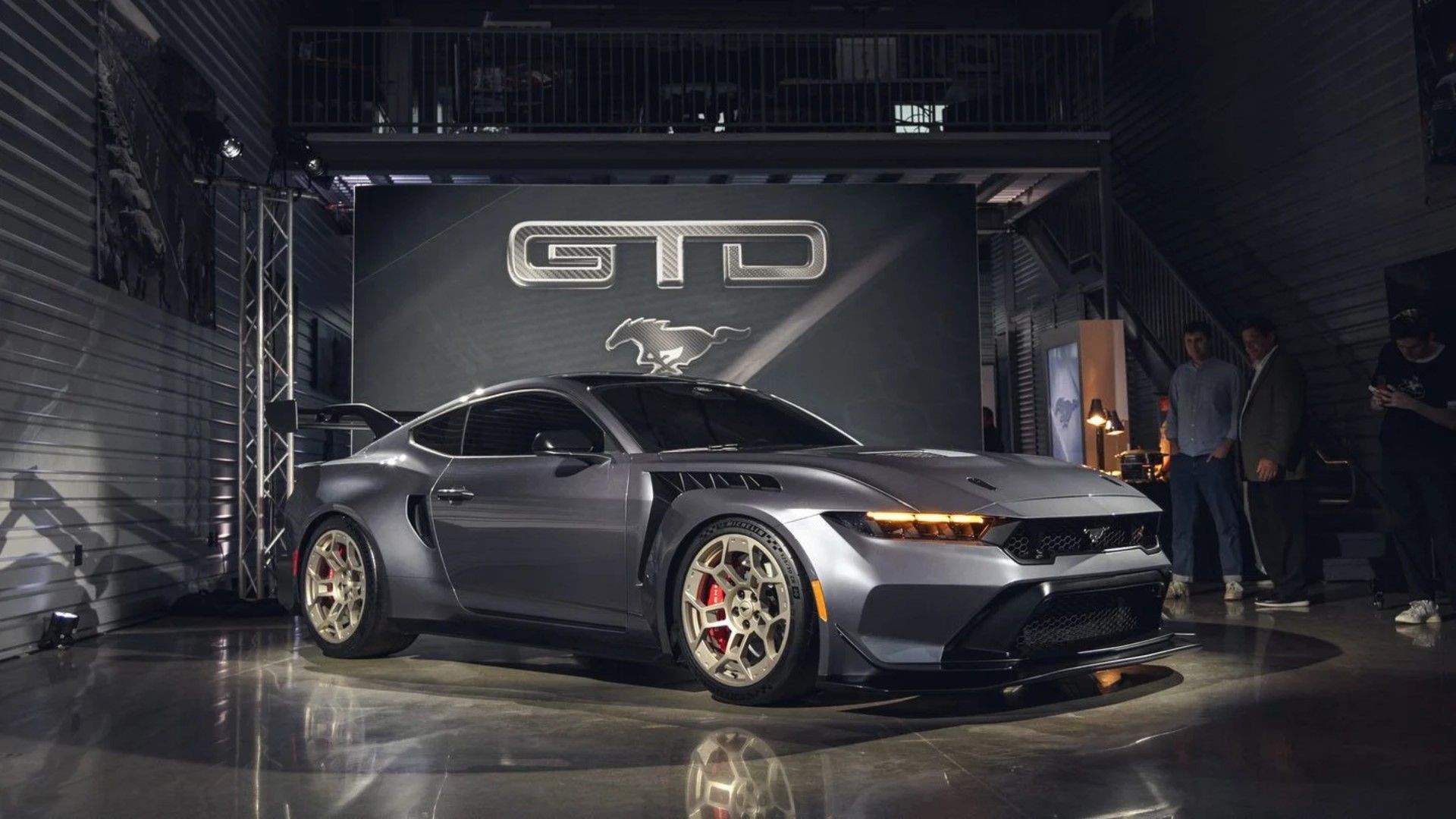 2025 Mustang GTD
2025 Mustang GTD
](/top-features-of-the-2025-ford-mustang-gtd/)
6. 2019 Ford Mustang GT500
Top Speed: 180 MPH
 Red Ford Mustang GT500
Red Ford Mustang GT500
The GT500 moniker carries immense weight in the Mustang world, dating back to Carroll Shelby’s original high-performance Mustang in 1967. Regarded as the most formidable factory Mustang available, excluding Shelby American’s aftermarket Super Snake packages, the GT500 represents the pinnacle of Ford’s road-going performance technology. It’s the Mustang that sits at the top of the food chain, delivering raw power and track-ready capabilities.
Specifications
| Engine | Supercharged 5.2-liter, DOHC 32-valve, V-8 |
|---|---|
| Power | 760 horsepower @ 7,300 rpm |
| Torque | 625-pound feet @ 5,000 rpm |
| Drivetrain | 7-speed dual-clutch automatic; rear-wheel drive |
| Zero to 60 | 3.4 seconds |
| Quarter mile | 11.3 seconds @ 132 MPH |
| Top speed | 180 MPH (manufacturer claim) |
After a hiatus since 2014, the GT500 badge returned in 2019 with a vengeance. Packing a staggering 760 horsepower and a lightning-fast dual-clutch automatic transmission, this Mustang prioritizes speed above all else. Aerodynamic enhancements and an optional handling package further optimize it for track performance. While capable of reaching 180-MPH, the GT500 isn’t just about straight-line speed. Equipped with magnetic dampers, powerful brakes, and performance tires, it’s also adept at challenging far more expensive sports cars on racetracks and winding roads, making it a truly well-rounded performance machine.
5. 2014 FPV Falcon GT-F 351
Top Speed: 186 MPH
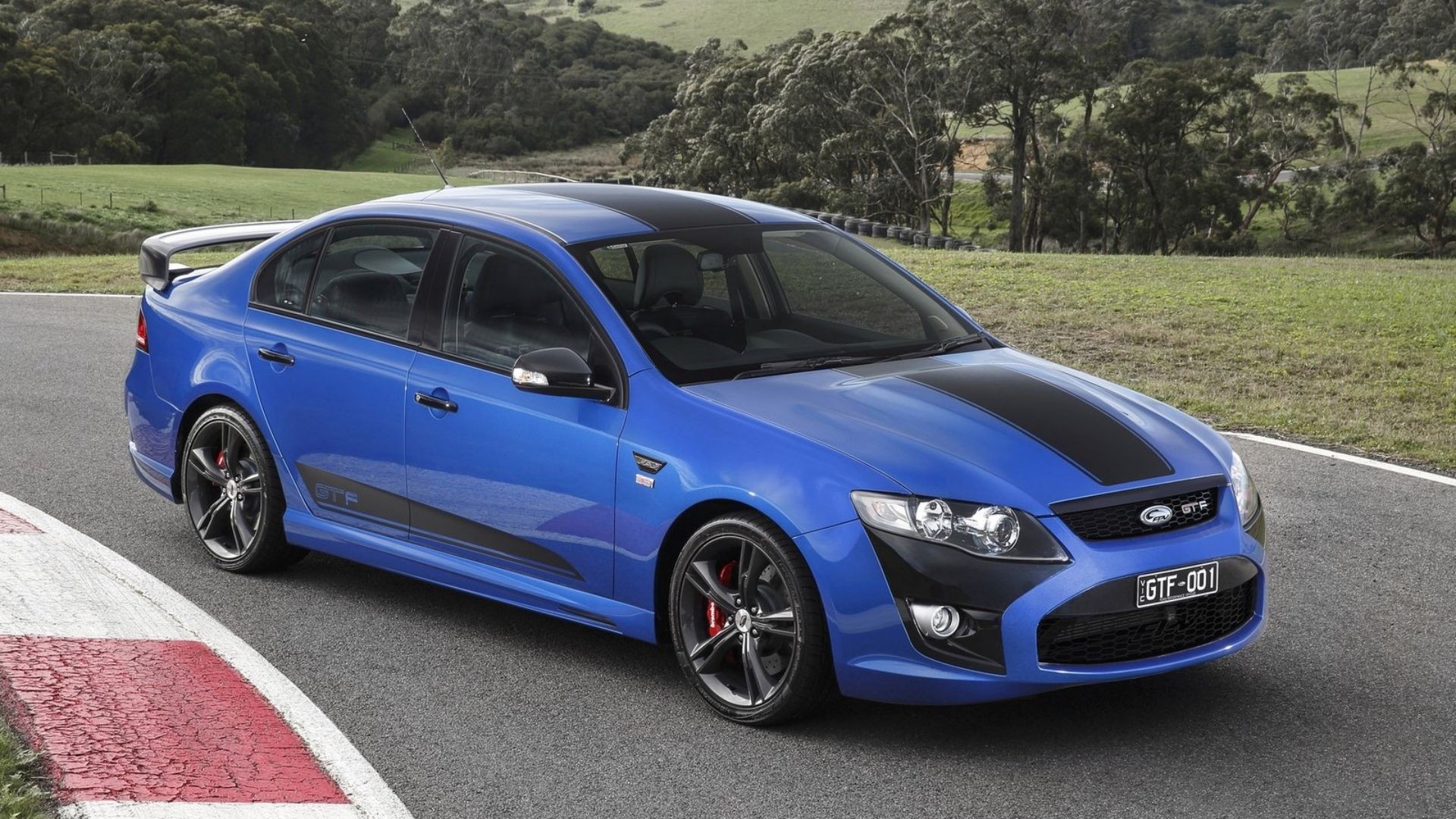 Blue FPV GT-F
Blue FPV GT-F
Ford Performance Vehicles (FPV) was the performance arm of Ford Australia, which continued to develop the Falcon sedan long after its North American discontinuation in the 1970s. Down under, FPV kept the Falcon spirit alive until 2014, when rising costs and declining sales led to its discontinuation. FPV decided to send off the Falcon with a truly memorable final edition: the GT-F 351.
Specifications
| Engine | Supercharged 5.0-liter, DOHC 32-valve, V-8 |
|---|---|
| Power | 471 horsepower @ 5,750 rpm |
| Torque | 420-pound feet @ 2,500-5,500 rpm |
| Drivetrain | 6-speed manual; rear-wheel drive |
| Zero to 60 | 4.5 seconds |
| Quarter mile | 12.8 seconds @ 111 MPH |
| Top speed | 186 MPH |
Powered by a supercharged “Coyote” V-8 – the same engine family found in the Mustang – the GT-F 351 was essentially a four-door Mustang in spirit. The “351” designation referred to its power output in kilowatts, which translates to a robust 471 horsepower in US units. This power, coupled with a six-speed manual transmission in a four-door sedan, allowed the GT-F 351 to reach an impressive 186 MPH. Beyond straight-line speed, the GT-F also boasted capable handling and stopping power thanks to six-piston Brembo brakes in the front. This blend of performance and practicality positioned it more as a rival to the BMW E39 M5 than a traditional muscle sedan, making it a unique and highly desirable fast Ford.
[  Ford Performance Models
Ford Performance Models
](/things-few-people-know-about-ford-performance/)
4. 2005 Ford GT
Top Speed: 205 MPH
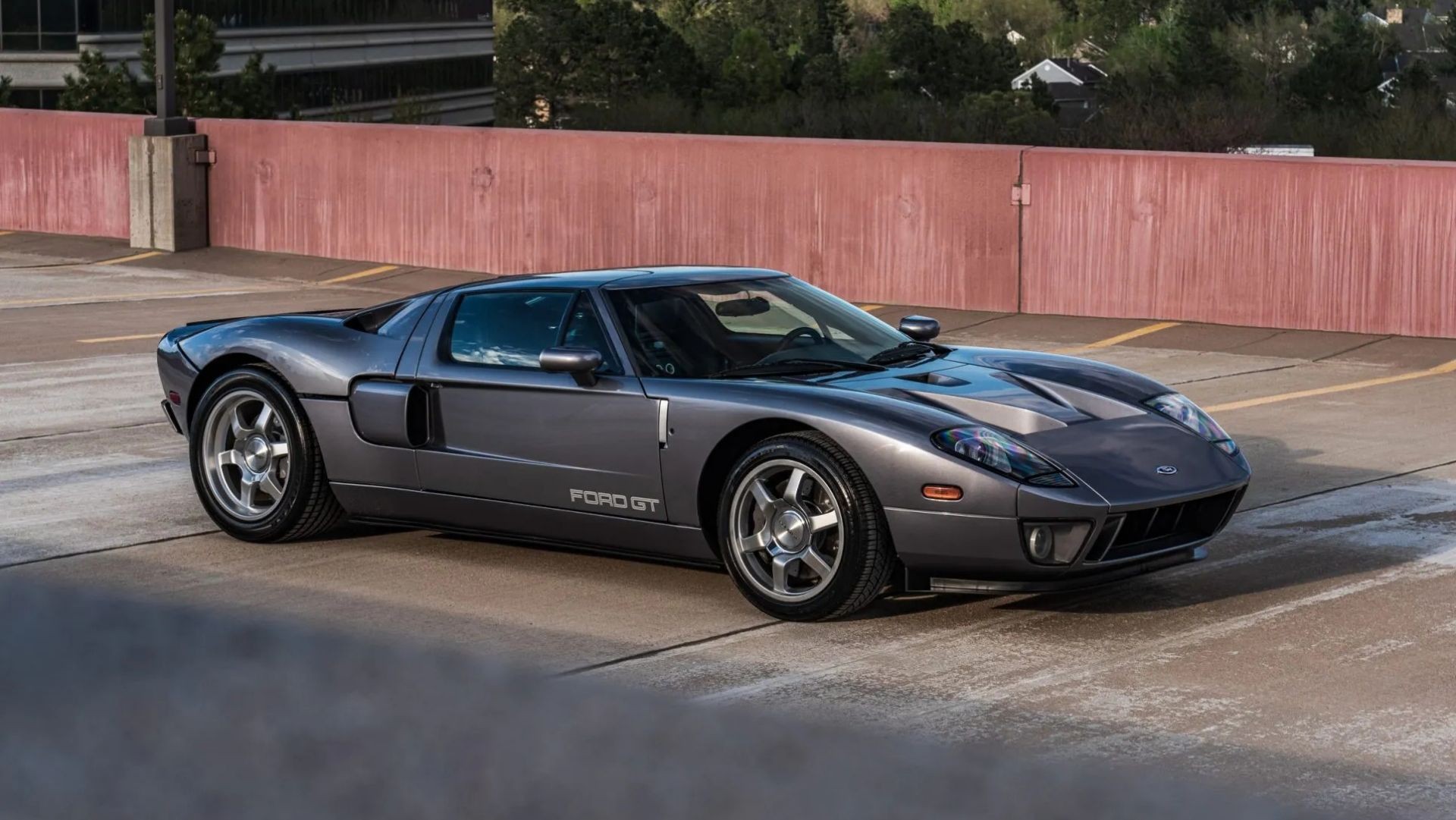 Silver Ford GT
Silver Ford GT
The 2005 Ford GT was more than just a car; it was a direct homage to the legendary Ford GT40 race cars of the 1960s, designed to rekindle Ford’s performance image. The anticipation surrounding its release was immense, fueled by the knowledge that Ford was once again building a world-class supercar. When it finally arrived, the 2005 Ford GT captured the spirit and styling of its iconic predecessor in a modern, high-performance package.
Specifications
| Engine | Supercharged 5.4-liter, DOHC 24-valve V-8 |
|---|---|
| Power | 550 horsepower @ 6,500 rpm |
| Torque | 500-pound feet @ 3,750 rpm |
| Drivetrain | 6-speed manual; rear-wheel drive |
| Zero to 60 | 3.7 seconds |
| Quarter mile | 11.7 seconds @ 127 MPH |
| Top speed | 205 MPH (governor limited) |
Powered by a supercharged Ford modular V-8 engine producing 550 horsepower, the 2005 GT sent power to the rear wheels via a six-speed manual gearbox, a testament to driver engagement. Upon its release, it was immediately compared to contemporary Ferraris, most notably the 360 Modena. The Ford GT proved that the Blue Oval could still compete in the supercar realm, exceeding the Modena’s 183-MPH top speed and reaching a governed 205 MPH. It was a resounding statement, proving Ford’s ability to build world-class sports cars and challenge the established European marques.
3. 2013 Ford Shelby Mustang GT500 Super Snake
Top Speed: 216 MPH
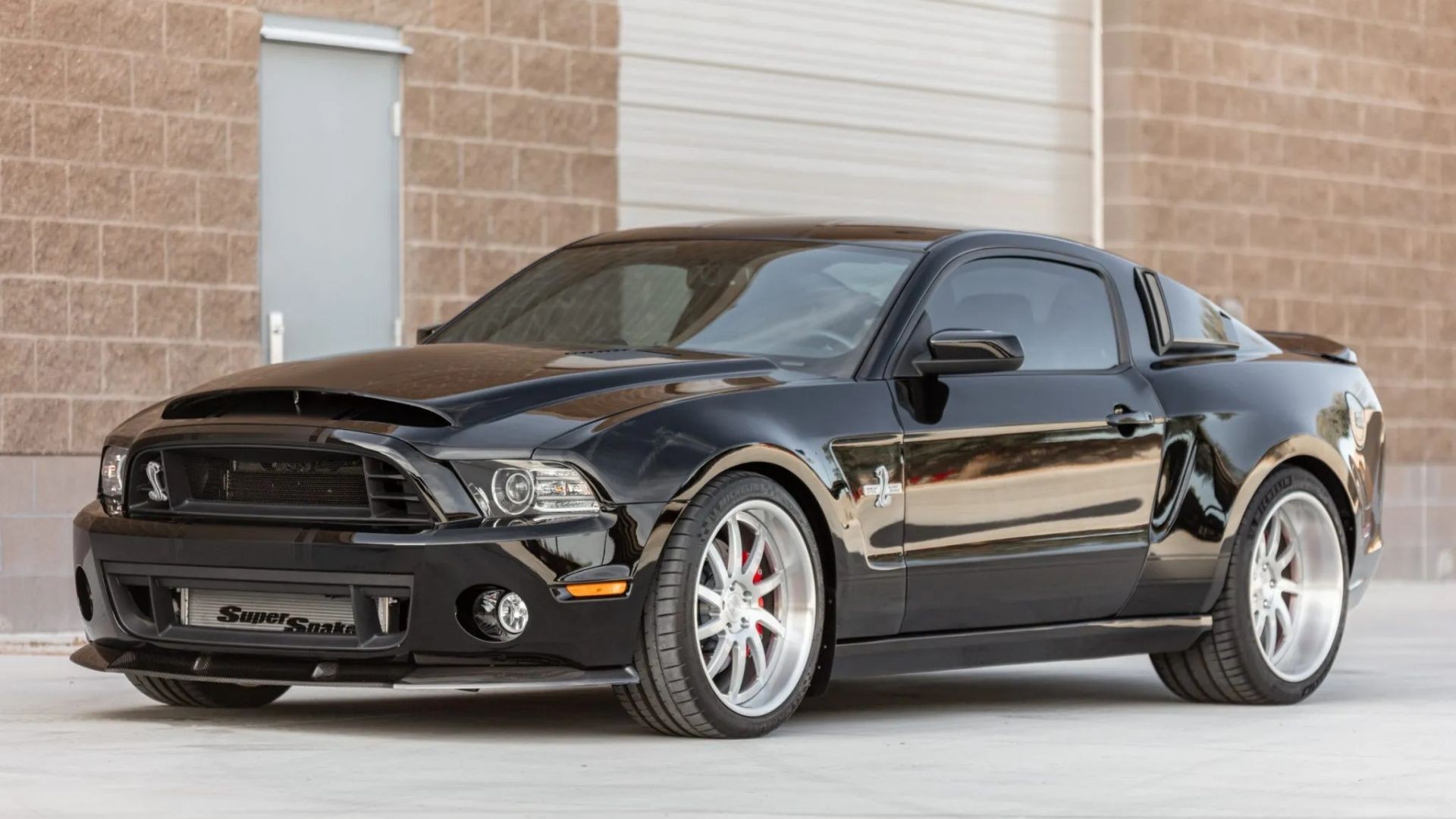 Black Ford Shelby Mustang Super Snake
Black Ford Shelby Mustang Super Snake
If the Ford GT is considered Ford’s halo car, the Mustang is undoubtedly its icon. From its humble beginnings as the originator of the pony car segment, the Mustang has evolved alongside Ford’s technological advancements. The GT500 designation already signifies immense performance, but adding “Super Snake” to the name elevates it to another level entirely. The Shelby Mustang GT500 Super Snake represents an extreme level of Mustang performance, pushing the boundaries of what’s possible with the platform.
Specifications
| Engine | Supercharged 5.8-liter, DOHC 32-valve V-8 |
|---|---|
| Power | 662 horsepower / 850 horsepower (optional) |
| Torque | 631-pound-feet / 800-pound-feet (optional) |
| Drivetrain | 6-speed manual; rear-wheel drive |
| Zero to 60 | 3.7 seconds |
| Quarter mile | 11.9 seconds |
| Top speed | 216 MPH |
Even in its factory GT500 form, the 2013 Mustang delivered a potent 662 horsepower. However, Shelby American took it to ludicrous levels, offering an optional 850-horsepower performance package. This upgrade employed a massive 3.6-liter supercharger, dramatically increasing power output and performance. But the Super Snake transformation went beyond just engine upgrades. Shelby also enhanced the cooling system, suspension, and bodywork, adding signature Super Snake styling cues and even an optional widebody kit. The result was a Mustang capable of reaching 216 MPH, solidifying its place as one of the fastest and most extreme Mustangs ever created.
[ 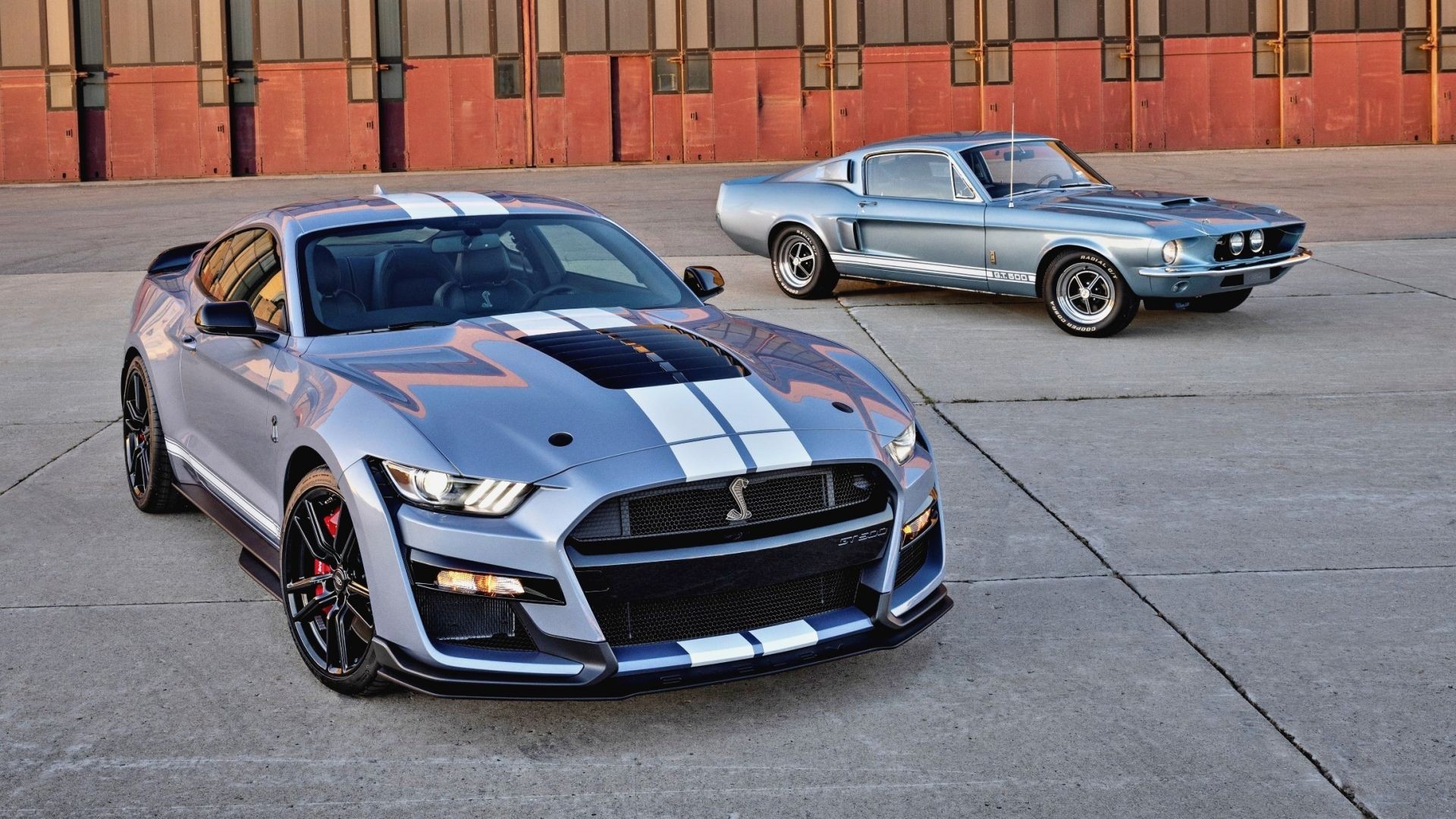 Blue 2022 Ford Mustang Shelby GT500
Blue 2022 Ford Mustang Shelby GT500
](/history-of-the-ford-mustang-shelby-gt500/)
2. 2019 Ford GT
Top Speed: 216 MPH
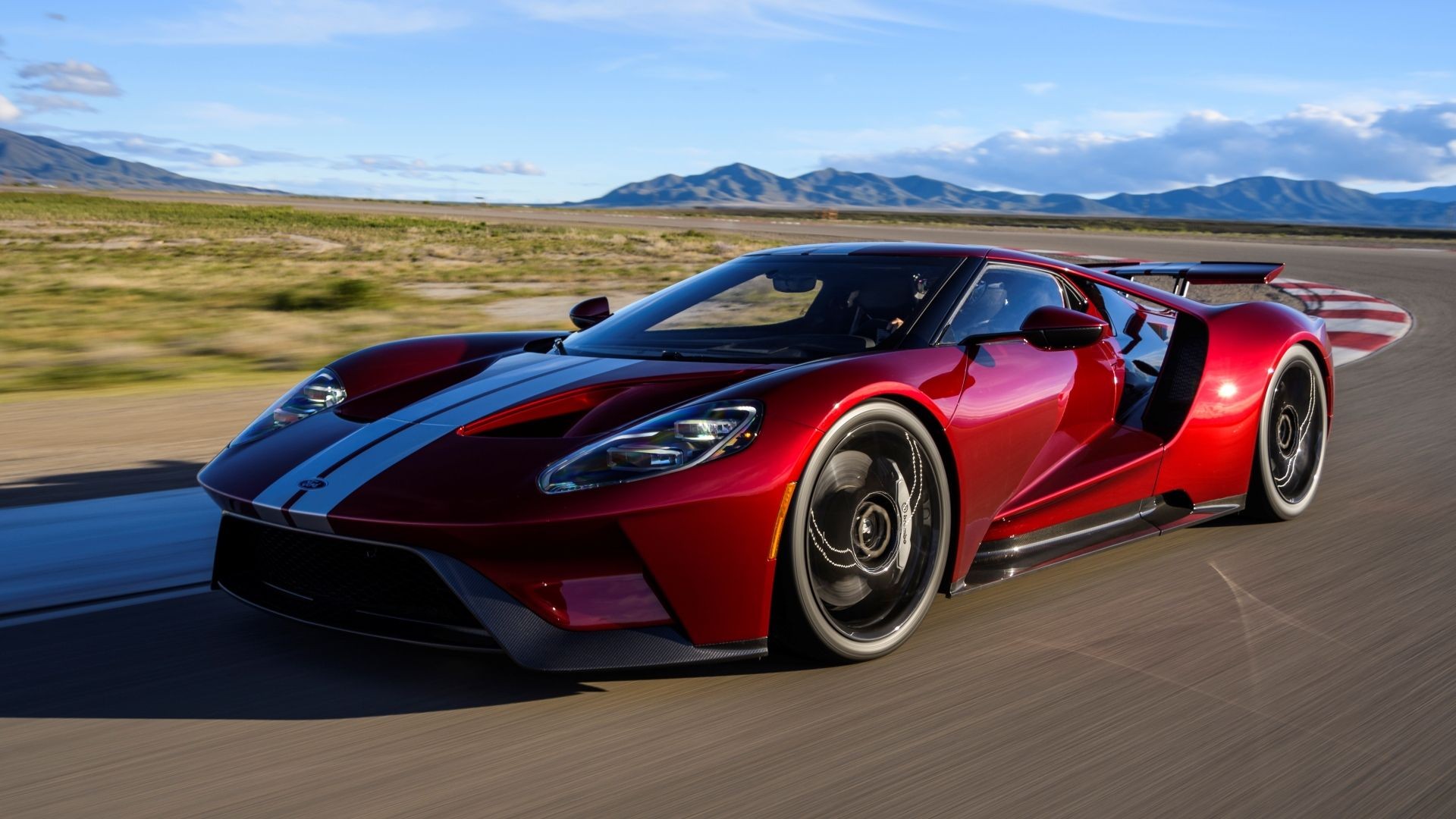 Red Ford GT
Red Ford GT
The second-generation Ford GT is a worthy successor to both the 2005 model and the original GT40 Le Mans racers. It’s a true endurance racer at its core, engineered for both track dominance and road legality. The 2019 Ford GT marked a significant technological shift, utilizing Ford’s high-performance EcoBoost engine technology. This twin-turbocharged, direct-injection system delivers impressive power while also improving fuel efficiency compared to traditional large-displacement engines.
Specifications
| Engine | 3.5 liter Twin-turbocharged and intercooler, Miller-capable DOHC 24-valve V-6 |
|---|---|
| Power | 647 horsepower @ 6,250 rpm |
| Torque | 550-pound feet @ 5,900 rpm |
| Drivetrain | 7-speed dual-clutch with manual mode; rear-wheel drive |
| Zero to 60 | 3.0 seconds |
| Quarter mile | 10.8 seconds @ 134 MPH |
| Top speed | 216 MPH (manufacturer claim) |
While EcoBoost technology is widespread across Ford’s vehicle lineup, in the Ford GT, its primary focus is on maximizing speed and performance. Despite being the first GT to move away from a V-8 engine, the latest Ford GT’s performance rivals supercars from established high-end manufacturers like Lamborghini, Ferrari, and McLaren. Powered by a twin-turbocharged EcoBoost V-6, the Ford GT is capable of reaching 216-MPH on the Mulsanne Straight at Le Mans, the very track where it secured a class victory, echoing Ford’s historic triumph in 1966.
1. 1967 Ford GT40 Mk IV
Top Speed: 220 MPH
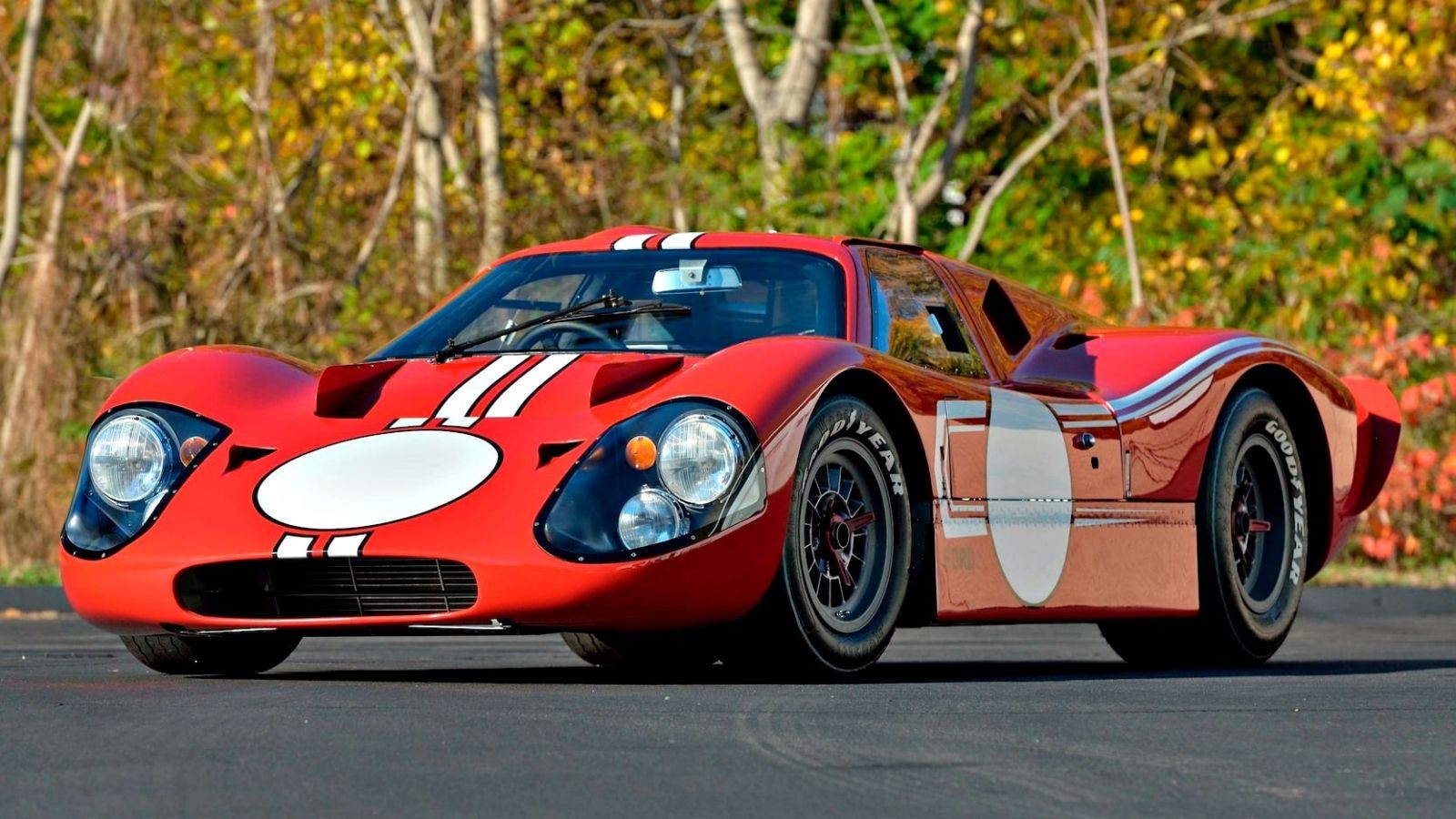 Red 1967 Ford GT40 MK IV
Red 1967 Ford GT40 MK IV
While the Mk II and Mk III Ford GT40s were undeniably fast and successful at Le Mans, their top speed on the 3.6-mile Mulsanne Straight hovered just above 200 MPH. This changed dramatically with the introduction of the experimental “J-cars,” which evolved into the GT40 Mk IV. The Mk IV pushed the boundaries further, achieving a remarkable 220-MPH on the famous Mulsanne Straight at Le Mans, setting a new benchmark for Ford performance.
Specifications
| Engine | 7.0-liter, pushrod OHV 16-valve naturally aspirated V-8 |
|---|---|
| Power | 500 horsepower @ 6,400 rpm |
| Torque | 470-pound-feet @ 5,000 rpm |
| Drivetrain | Mid-engine 4-speed manual; rear-wheel drive |
| Zero to 60 | 3.1 seconds (estimated) |
| Top speed | 220 MPH |
The GT40 Mk IV benefited from increased power, a lighter aluminum honeycomb chassis, a more robust transmission, and a significantly more aerodynamic body. These advancements combined to make the Mk IV GT40 the ultimate racing GT40 ever produced. It secured Ford’s second Le Mans victory, definitively proving that Ford could not only build fast cars but also outcompete Enzo Ferrari on his own terms, on the legendary Le Mans circuit. The 1967 Ford GT40 Mk IV stands as the pinnacle of Ford’s early pursuit of speed and racing dominance, and remains the fastest Ford car ever officially recorded.